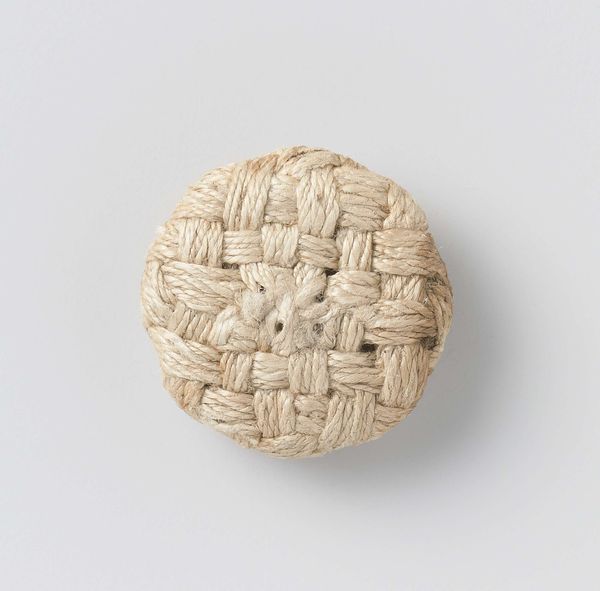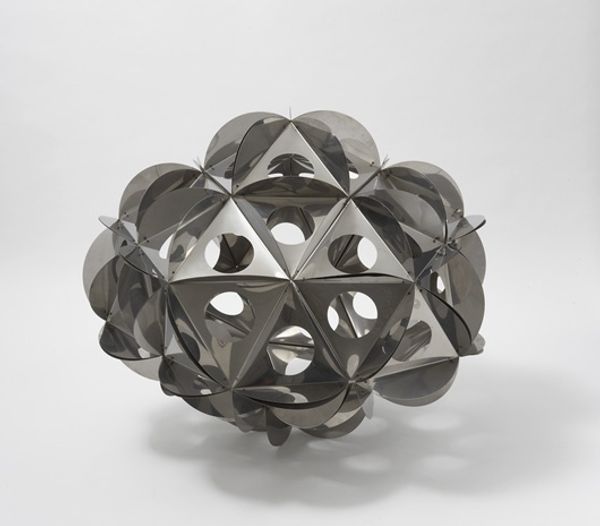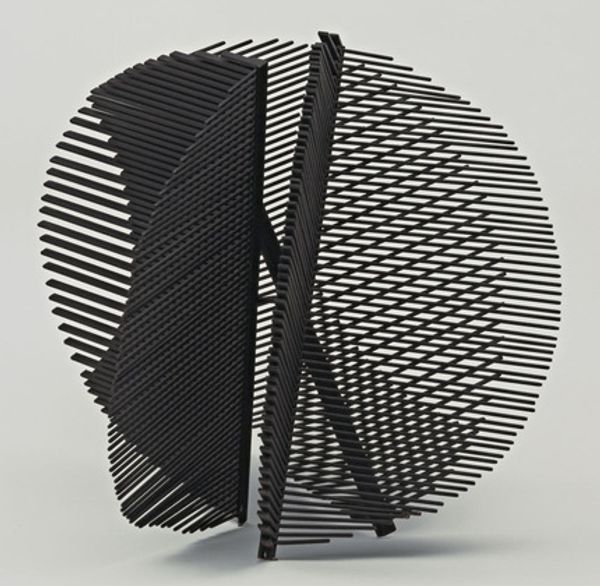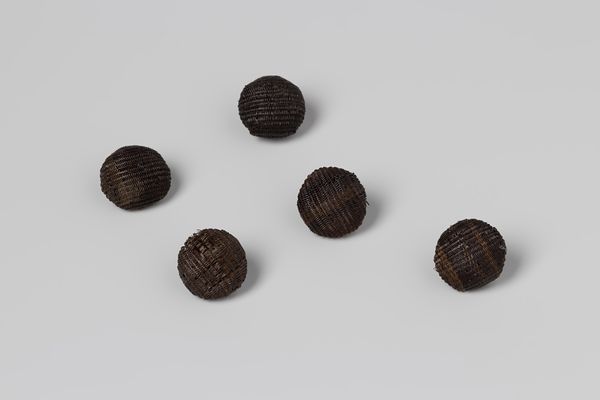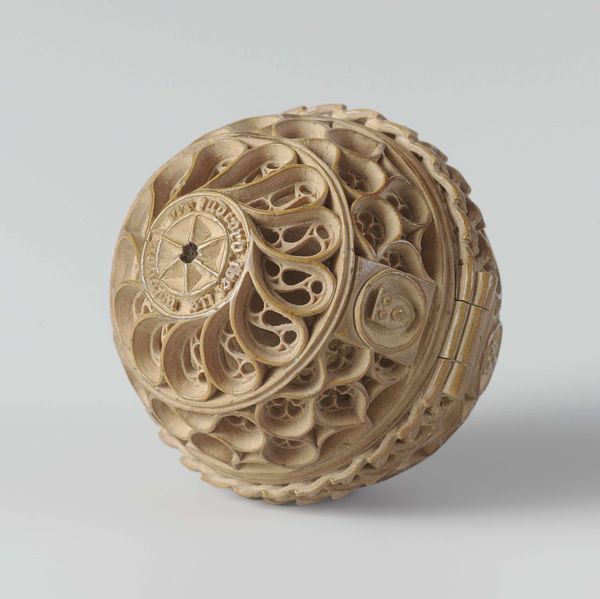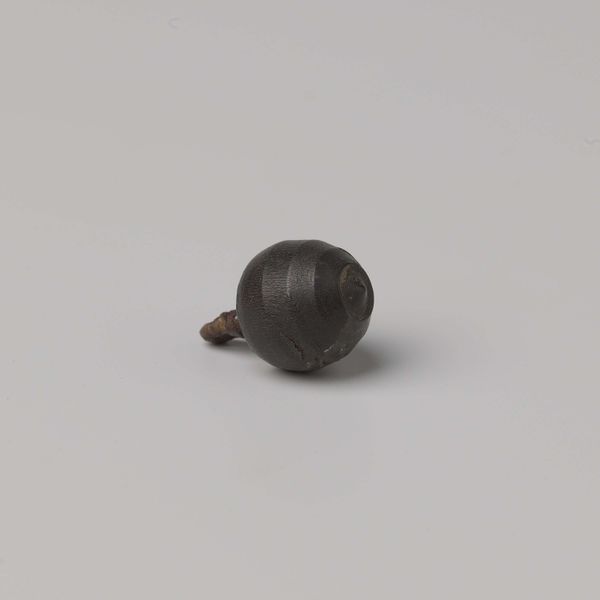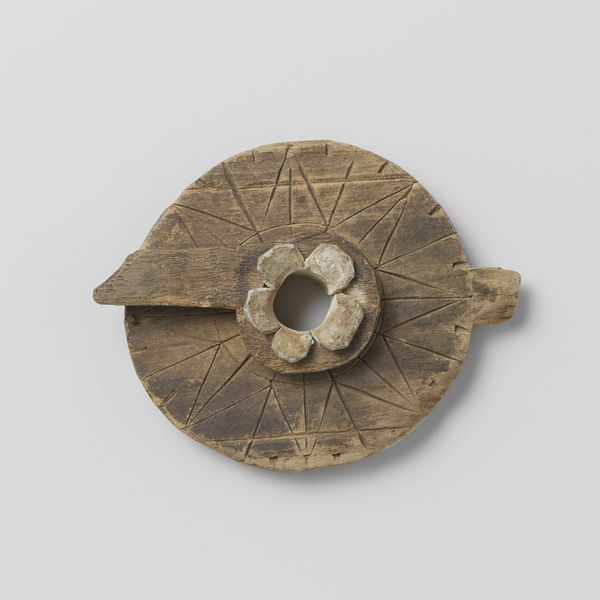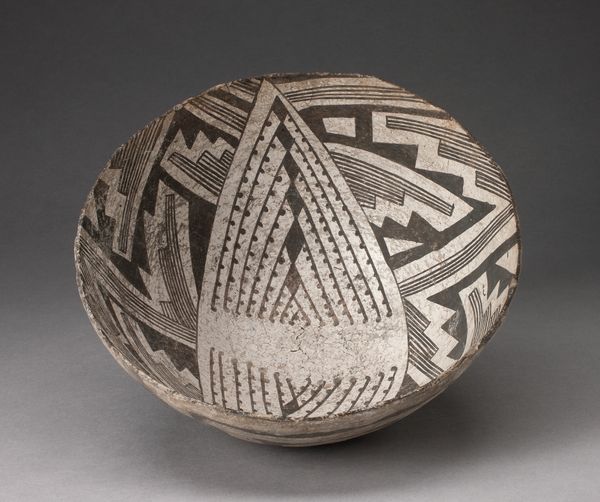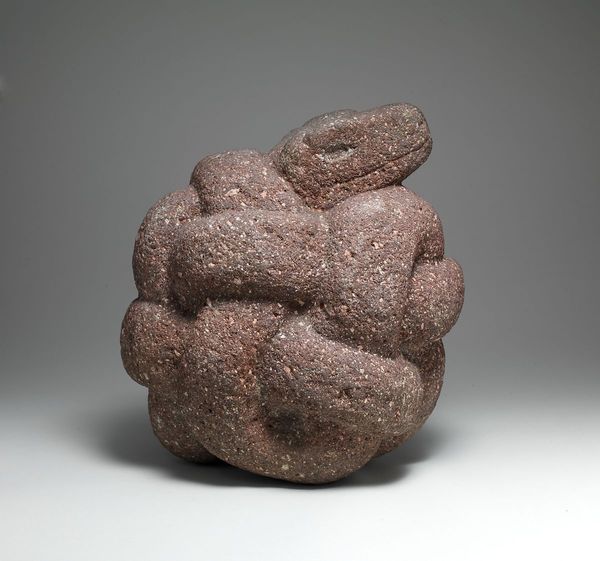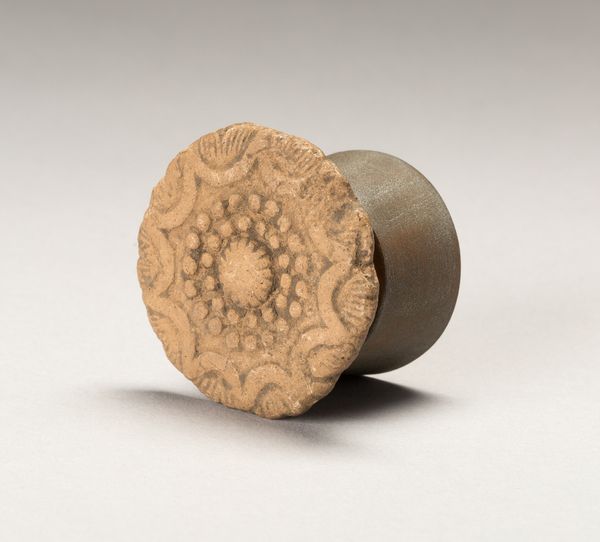
sculpture, wood
#
geometric
#
sculpture
#
wood
Dimensions: height 0.7 cm, diameter 1.6 cm
Copyright: Rijks Museum: Open Domain
Editor: We're looking at "Knoop," a small wooden sculpture, made around 1590-1596 by an anonymous artist, now residing at the Rijksmuseum. It's surprisingly captivating. I’m struck by how ordinary yet meticulously crafted it appears. What stories does it whisper to you? Curator: Its seeming ordinariness is precisely what fascinates. We often overlook the artistry embedded in everyday objects. Considering the period, the late 16th century, objects like this reflect social hierarchies and sumptuary laws dictating materials allowed for different social classes. Does its existence within a museum context, therefore, transform its purpose? Is it elevated from a mere utilitarian item to a symbol of cultural memory? Editor: That's fascinating! It almost feels like a historical artifact recontextualized as art. Does the fact that its maker is unknown play into this reinterpretation? Curator: Absolutely. Anonymity invites speculation. Without an authorial voice, its reception becomes open to interpretation, potentially shaped by curators, historians, and the public. How do museums frame objects like these? Are they displayed to emphasize artistic skill, social context, or perhaps even trade networks of the era? These choices dramatically affect how we perceive its "artistic" merit. Editor: So, the presentation influences our perception just as much as the object itself? I hadn't considered that so explicitly. Curator: Precisely. Museums wield considerable power in constructing narratives. Ultimately, "Knoop" exemplifies how social context shapes our perception of value. Editor: Thank you; I’ll certainly be more conscious of that power now. It adds a whole new layer to how I appreciate art.
Comments
No comments
Be the first to comment and join the conversation on the ultimate creative platform.
